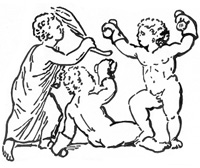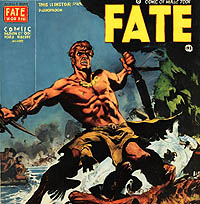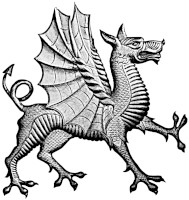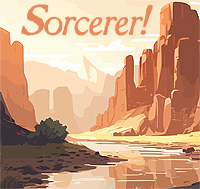Laton McCartney, descendent of one of the first men to span the Great Continental Divide, and the first to map it for wagon borne pioneers, spends the first 32 pages of his book introducing the players and economics of the North American fur trade.
The people working the fur trade included some French Canadians, but were mostly Scottish immigrants who had been pushed off of their ancestral lands by the Enclosure Acts, which basically gave everything belonging to poor Scotts to the rich Brits and their Scottish lackeys.
The big player in the American fur trade was the rude old German John Jacob Astor who used Thomas Jefferson and his Canadian competitors to forge his own fur trading empire. The most ridiculous aspect about the fur business in the U.S. around 1805 was that 75% of the U.S. fur supply was imported from Europe, after being harvested in the U.S. and shipped through Canada!
Harvested?
Should one not say hunted honorably by free living frontiersmen?
No, what was going on around 1800 was the despoliation of a continent of its animal resources. Almost every animal east of Appalachia had been killed. Our current numbers of every game species are higher than what remained after 1800 when most of the United State was still covered in forest. Those were some empty woods, soon to be cleared to make room for farms and Civil War battlefields. The 1700s saw deliberate hunts of total extermination in Pennsylvania, in order to deprive Indians of their natural resources. By this time, entrepreneurs had hit upon a better way of getting the Indians into a resource depleted position, where they could be easily exploited as guides to hunt out the rest of the continent.
Indians were paid in blankets, guns, powder and wares that their ladies liked, in exchange for animal pelts. The resulting profits were outrageous on the European side, and would rate in the billions of dollars by today’s standards. With the passage of a British law that required the wearing of beaver hats—and hats mad only of beaver—that animal became doomed. But he was not the only four-legged resource open for exploitation. Here are some numbers.
One year’s intake by the North West Company at its Montreal headquarters in the 1790s consisted of 11,000 mink pelts, 17,000 muskrat pelts, 32,000 martin pelts, and 100,000 beaver skins!
This was still only 80% of Canada’s annual fur trade.
The Severn set sail for Canton China in 1800 with a cargo of 50,000 pelts, including 30,573 sealskins.
It only took Europeans ten years to wipe out beaver in the Boston area in the early 1600s, mostly through purchases from Natives. The picture that emerges of the fur trapping era is one of entrepreneurial suction of animal resources on a continent-wide scale. By hijacking the Indian’s own way of life, and at the same time addicting him to metal goods and liquor, he could be peacefully engaged to despoil his own lands. Sheridan and Sherman did not originate the idea of wiping out the North American habitat in order to bring down the Indians. The ideal of ecological warfare came with the Puritans on the Mayflower, and initially enlisted the enemy to cut its own economic throat.
According to fur trade historian Hiram Chittenden, “The relation of the trader to the Indian was the most natural and congenial of any which the two races have sustained toward each other…Properly conducted, it fitted perfectly with the Indian’s previous mode of life...and enabled him to pursue his natural occupation of hunting.”
Thus the Voyageur, Mountain Man and other Frontiersmen, in seeking to escape civilization, or being driven into the wilderness by its inequities, served as the vector by which its toxic ideology of material accumulation at all costs infected the indigenous population. There were occasions when natives saw this eventuality and made preemptive strikes against the Europeans, such as the war launched by Powhatan’s little brother against the English, after holy men of his tribe had journeyed to England and discovered that the place was totally despoiled of natural resources.
But such defiance was rare. Generally speaking, once people became accustomed to trade goods anywhere in the world, they would then accept the values of the culture that produced these superior tools. What is astonishing from our vantage point is how suddenly, and totally, wildlife was literally sucked out of the North American continent through the cooperative enterprise of governments, merchants, frontiersmen, and Indians.
I suppose no life would be worse than to be born a Hindu beaver in Montana in 1800, looking forward to annual transmigrations until there were not enough animals being born to replace the ones killed to keep a monkey brain warm in the European winter.
When the man that would become known as Liver-Eating Johnson rode west, away from his displaced Scottish immigrant family in New Jersey, he literally journeyed into a final frontier; a wilderness that was becoming a wasteland as quickly as feasible.











The numbers you cite for the Northwest Company's pelt intake in the 1790's are impressive given the primitive equipment and hazardous conditions of the day! I'm a modern trapper and always dreamed of trapping "back in the day".
You might find it interesting that the transformation from wilderness to agriculture in the midwest has been positive for some species of furbearer. This is primarily due to corn fields providing a reliable diet for such species as raccoon, deer, etc. In areas with agricultural row crop fields mixed in with timber and river/creek areas, the wildlife populations can be unbelievable. We've had entire 20-acre fields of corn along river bottoms completely denuded of corn when it comes time to pick it.
The Iowa DNR estimates that the 2013 furbearer harvest included approximately 5580 mink, 30,574 muskrat, 308,070 raccoon and 4100 red fox. This is just for one state and one year! As you can see, the "intake" is still enormous. To give you an idea of what one modern trapper can accomplish, my personal best for my annual 2-week trapping vacation is ~400 raccoon, ~150 muskrat, ~20 mink, ~50 oppossum, ~20 beaver, ~10 fox, ~10 coyote and ~10 skunks. This would have been an unimaginable catch even 50-years ago. Modern traps, automobiles, mixed farm/timber habitat, and fewer trappers make this possible.
Thank you.
That is fascinating.
Of course the Coyote has been the biggest winner in this transformation.
I did see a beaver on the Northeast River, coated in oil from a fuel slick, some years ago when I was camping in Elkneck State Park. He seemed pretty happy as he went about his business. It is amazing to me that elk once lived this far east. And again, the whitetail deer population in Maryland is beyond anything that the Indian tolerated.
The thing that shocked me the most about reading this book was that the Indians were obviously doing the vast majority of the hunting and trapping for export, which is not exactly what the current narrative promotes.
Good luck with your trapping.